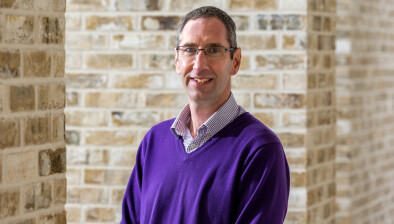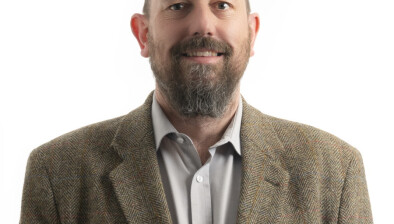Peter Reekie: Infrastructure, construction and the built environment – 4 trends to watch in 2022
Scottish Futures Trust chief executive, Peter Reekie, shares his thoughts on infrastructure trends for 2022 and beyond.

Peter Reekie
It is not rocket science to predict that 2022 will be a year of ongoing COVID recovery, with the world trying to find and adjust to whatever the new normal is for social interaction and the workplace. We can also expect a year of continued fall-out from BREXIT, with adjustments to the economy and supply chains; and of climate action with the momentum towards long-term net-zero gathering pace as energy prices soar and new record weather extremes will be recorded, calling our short-term resilience into question.
But what does this mean for infrastructure and the built environment; and in particular where these are most densely packed, in our cities? It is generally a slow-moving sector with each investment decision and significant project leading to an asset which creates an anchor for a family, an organisation or a place which lasts for decades or even centuries.
So, I expect the drivers to remain consistent, as PENUTs and Black Swans. PENUTs are my acronym for the global megatrends whose influence can be found – if you look hard enough - in just about every change, so we do well to understand how they apply to us:
People: changing demographics both geographically and by age, with increasing individualisation and expectation driven by global connectedness.
Economies: the rise of the East and shifting trade patterns with protectionism as a feature and slowing global trend-growth.
Nature: both the increasing scarcity of natural resources and accelerating climate change leading to competition, larger-scale resilience issues and variable recognition of the need to decarbonise.
Urbanisation: huge on a global scale and more challenged recently in developed economies.
Technology: the digitalisation of everything we do, particularly the emergence of machine-to-machine communication and artificial intelligence.
Black Swan events, developed as a theory by Nassim Nicholas Taleb, by contrast describe the surprise events which have a disproportionately significant and widespread effect and which are widely, sometimes inappropriately, post-rationalised. The COVID pandemic could be seen as one, but others argue it was entirely predictable and therefore not what Donald Rumsfeld christened more memorably as an “unknown unknown”.
If we apply the impact of the PENUTs and Black Swans to our own scale, and to infrastructure and the built environment, I identify four trends to watch out for in 2022: Localism, Energy Transition, Smart Assets and Emerging Standardisation:
Localism: International travel will remain depressed with the Economist Intelligence Unit suggesting levels remaining 30% below 2019. The, and the re-shaping of both commuting and logistics, will see the type of pressure on tourism related and wider transport infrastructure continue to change. This reflects a broadening out of the 20-minute neighbourhood idea into a more general “live local” principle, associated with a welcome continuation of valuing natural assets. Individualism will see some people continuing to value cities and others valuing tranquillity and rurality. There may be an increasing polarisation between the groups, but they will share an increased sense of the value of their local place and expectation of how it works for them.
Energy Transition: Energy Transition will remain on everyone’s lips. The pressure of the legally enshrined emissions targets for 78% emissions reduction from 1990 levels by 2035 and net zero by 2050 for the UK, and 75% reduction by 2030 with net zero by 2045 for Scotland, along with the follow up to COP26 will combine with globally high energy prices to create a pressure cooker of need for action. On the positive side, there will be moves to create investable propositions at scale across multiple technologies including renewable generation and energy storage, hydrogen and carbon capture, use and storage (CCUS), but the calls to do more, faster will remain.
In particular the future of building heating will remain a knotty issue with the practicality and cost of energy efficiency measured and zero-carbon heat sources in different building types and for different places debated amongst experts and interested investors / asset owners. I don’t expect to see a fundamental resolution during the year, with further technology trials at scale and a socialisation of the funding and financing debate required first.
Smart Assets: Building ventilation will join the legacy of fire safety issues to be at the front of the minds of civic and other complex building owners and operators whilst changing demand patterns occupy the minds of network infrastructure people. This whilst they are all trying to get their heads above water to consider the twin and related challenges of decarbonisation and maintaining resilience in the face of locked-in climate change. Increasingly they will be turning to smart, or digital solutions both at individual asset scale and more broadly and potentially powerfully to understand and optimise how whole places work for people more healthily and sustainably.
The research group Forrester has predicted a 40% increase for 2022 in investment in smart infrastructure. Issues of data standards, intellectual property and cyber security will be barriers to overcome but the prize of combining the digital models for different asset classes with sensor technology, the internet of things and artificial intelligence to create predictive models of places is an opportunity we must pursue vigorously – and together across different companies and stakeholder groups.
Emerging Standardisation: All of the trends I have described will lead to changes in what the construction industry needs to build, and what it must build things from. In amongst that, project delivery won’t get any easier or cheaper, with materials and labour remaining tight. Specifications will, slightly worryingly, continue to get more complicated and designers will be under immense pressure to optimise for cost, for life-cycle energy use, for carbon intensity of materials and more. So the final trend, is for a change in how we go about construction. There will be the beginnings of a change towards standardisation and manufacturing as we realise that we simply can’t deliver what’s needed if everything is a prototype made in a muddy field.
The construction industry has largely, and in my view rightly, rejected mass production given the long-term impact of its products on people, organisations and places with which I started this piece. However, it can embrace the mass customisation of modern digitalised production techniques and it must do so to become environmentally and economically sustainable. There will need to be some changes on the demand side to create elements of standardisation to support investment in manufacturing approaches, and supply-side changes too with new skills and organisational capacity in demand.
I don’t expect these trends to be flashes in the 2022 pan. They are part of a more rapid change than we have ever seen across the sector and even an emerging dislocation. If so, I’d see that as welcome from an environmental and social perspective, inevitable from a technological perspective and necessary from an economic one.
We at the Scottish Futures Trust, a Scottish Government centre of infrastructure expertise, look forward to playing a leading part in these changes. We will use our unique combination of skills to work with central and local government, and with industry to maximise the social, environmental l and economic benefits from infrastructure across Scotland. If you share similar interests, perhaps we can collaborate. Have a look at our website for more information.















